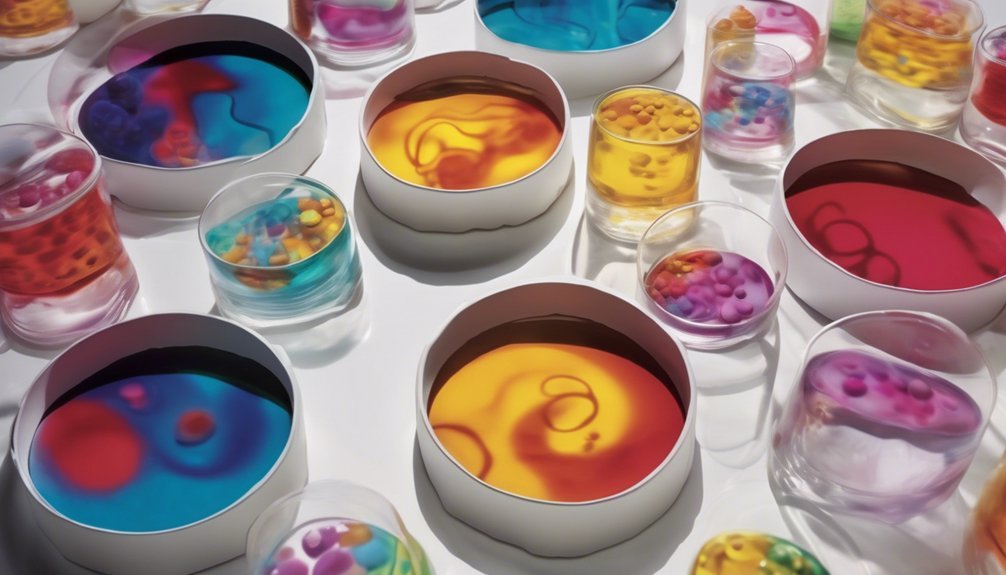Drug repurposing offers a silver lining in cancer treatment, presenting opportunities to utilize existing medications for new therapeutic roles. While this approach can lead to quicker patient access and reduced costs, it comes with hidden challenges that can’t be overlooked. The complexities of regulatory pathways and potential for unexpected side effects require careful consideration. What strategies can mitigate these risks while maximizing the benefits of repurposed drugs? The balance between promise and peril is essential in this evolving field.
Key Takeaways
- Drug repurposing offers faster access to effective treatments, significantly reducing the time and cost associated with traditional drug development.
- Existing medications may present unforeseen side effects, complicating their use in cancer treatment despite their established profiles.
- Determining optimal dosages for repurposed drugs can be complex, leading to potential risks in patient safety and treatment efficacy.
- Inadequate clinical trial data for repurposed drugs can hinder informed treatment decisions and regulatory approval processes.
- Successful case studies demonstrate the potential benefits, but ongoing research is needed to navigate the challenges and maximize effectiveness.
The Concept of Drug Repurposing in Oncology

Although traditional drug development can take years and significant financial investment, drug repurposing offers a compelling alternative in oncology by utilizing existing medications for new therapeutic purposes.
Drug repurposing in oncology harnesses existing medications, providing a faster, cost-effective pathway to new cancer treatments.
This approach allows you to explore the mechanisms of action behind these drugs, revealing potential benefits in treating various cancers. By investigating previously established pharmacological profiles, you can identify new applications that enhance treatment optimization.
For example, medications initially designed for other conditions, like anti-inflammatory drugs or antidepressants, may exhibit anticancer properties.
This innovative strategy not only accelerates the discovery process but also reduces costs and risks associated with bringing new treatments to market.
Ultimately, it’s a way to serve patients more effectively by providing quicker access to potentially life-saving therapies.
Advantages of Drug Repurposing for Cancer Patients
Drug repurposing presents significant advantages for cancer patients, primarily by providing faster access to effective treatments. By utilizing existing medications, you reduce the time and cost associated with traditional drug development. This accelerated pathway improves patient accessibility, enabling healthcare providers to offer options sooner.
Furthermore, cost effectiveness analysis often reveals that repurposed drugs are more affordable compared to new therapies, allowing patients to benefit without the financial burden typically associated with cancer treatments. This approach not only maximizes resources but also enhances patient outcomes by diversifying treatment strategies.
Ultimately, drug repurposing can bridge the gap between research and clinical practice, ensuring that patients receive timely and potentially life-saving interventions while maintaining a focus on cost efficiency.
Challenges and Risks Associated With Drug Repurposing
While drug repurposing offers a promising route to expedite cancer treatment options, it also comes with significant challenges and risks that must be carefully navigated. You should be aware of the following issues:
- Regulatory hurdles: Adapting existing drugs for new uses often requires extensive regulatory approval processes that can be time-consuming.
- Safety concerns: Established medications may present unforeseen side effects when used for cancer treatment, raising potential safety issues.
- Dosing challenges: Determining the optimal dosage for a repurposed drug can be complex, affecting its efficacy.
- Efficacy gaps: There may be inadequate data from clinical trials to support the effectiveness of repurposed drugs for specific cancer types, complicating treatment decisions.
Navigating these challenges is crucial in maximizing the benefits of drug repurposing.
Case Studies: Successful Drug Repurposing in Cancer Treatment

As researchers explore innovative approaches to enhance cancer treatment, case studies highlighting successful drug repurposing provide valuable insights into this strategy’s potential.
One notable example is the use of thalidomide, originally developed for morning sickness, which has shown efficacy in treating multiple myeloma through clinical trials.
Another successful case is the repurposing of the antidepressant sertraline, which demonstrated potential in inhibiting tumor growth in glioblastoma patients.
The antidepressant sertraline shows promise in inhibiting tumor growth in glioblastoma patients.
These examples underscore how existing drugs can be swiftly integrated into treatment protocols, potentially reducing development time and costs.
Future Perspectives on Drug Repurposing in Oncology
With ongoing advancements in genomic research and data analytics, the future of drug repurposing in oncology looks promising.
As you consider its potential, keep these key areas in mind for future research and clinical trials:
- Biomarker Identification: Discovering biomarkers can help predict patient responses to repurposed drugs.
- Combination Therapies: Investigating synergistic effects of repurposed drugs with existing treatments may enhance efficacy.
- Adaptive Trial Designs: Utilizing flexible trial designs can expedite the evaluation of repurposed drugs, allowing for quicker patient access.
- Patient-Centric Approaches: Focusing on patient needs and preferences can guide more effective drug repurposing strategies.
Frequently Asked Questions
How Long Does the Drug Repurposing Process Typically Take?
The drug repurposing timeline varies significantly, often taking several months to years. While some drugs may achieve rapid approval, others face extensive testing, impacting their journey from concept to clinical use and patient benefit.
Are There Specific Cancers More Suited for Repurposed Drugs?
You’ll find that breast cancer, lung cancer, and leukemia treatments often benefit from repurposed drugs. These cancers respond well to targeted therapies, making them prime candidates for innovative approaches in drug repurposing and treatment strategies.
What Regulatory Hurdles Exist for Repurposed Cancer Drugs?
You’ll face significant regulatory challenges when navigating approval processes for repurposed cancer drugs. These hurdles often include demonstrating efficacy, ensuring safety, and complying with established guidelines, which can complicate timely access for patients seeking innovative treatments.
Can Patients Participate in Drug Repurposing Clinical Trials?
Imagine standing at the crossroads of hope; you can participate in drug repurposing clinical trials if you meet patient eligibility criteria. Your involvement could contribute significantly to advancing cancer treatment and helping others in need.
How Is the Safety of Repurposed Drugs Evaluated?
To evaluate the safety of repurposed drugs, you’ll conduct thorough safety assessments. These assessments focus on potential side effects, comparing them to existing treatments, ensuring that patients receive effective, safe alternatives without unexpected risks.
Conclusion
In navigating the complex landscape of cancer treatment, drug repurposing stands as both a beacon of hope and a cautionary tale. While it offers a chance for quicker access to therapies, the risks and uncertainties can cast shadows on its promise. As you weigh the potential benefits against the challenges, remember that every decision could mean the difference between life and death. Embracing this duality is essential in harnessing the true power of repurposed drugs in oncology.





